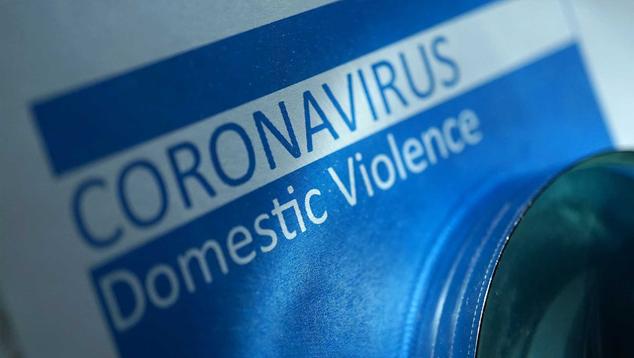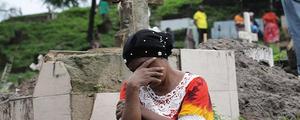Story Highlights
- Nearly 2 billion women globally think domestic violence is widespread in their country
- There are significant gaps in how men and women perceive domestic violence
- Largest gender gaps on this issue are in former Eastern bloc, Soviet states
Since the start of the pandemic, gender-based violence has increased, with its victims finding themselves trapped at home with their abusers, respecting lockdown measures at risk of being mistreated and unable to escape.
This phenomenon, dubbed the "shadow pandemic," puts additional pressure on health resources and essential services such as domestic violence shelters. According to UN estimates, 47,000 women and girls were killed in 2020 by an intimate partner or family member, or one woman and girl every 11 minutes.
But how widespread is it? The lack of global sunlight on the problem is one reason why, as part of Hologic's study on global women's health, we asked women and men about the scope of the problem in their countries.
The question is framed indirectly, allowing respondents to express their view of domestic violence without having to discuss their own victimization or that of loved ones.
"Domestic violence can be physical, psychological, or involve sexual acts done to someone against their will by a person they live with. In your opinion, is domestic violence a widespread problem in [country name], or not?"
Majorities of Women and Men See Domestic Violence as a Widespread Problem
During our first year of data collection in 2020, the first full year of the pandemic, two in three women aged 15 and older worldwide -- representing about 1.7 billion women -- said domestic violence is a widespread problem in their country. And nearly six in 10 men agreed, pointing to the issue's prevalence.
Although women around the globe consider domestic violence a widespread issue in their country, the perception tends to be generally higher, with more than eight in 10 women stating so across Northern America, Latin America, and Australia and New Zealand.
| % Yes, among women | |
|---|---|
| Northern America | 89 |
| Australia and New Zealand | 87 |
| Latin America and Caribbean | 85 |
| Sub-Saharan Africa | 79 |
| Europe | 76 |
| Middle East and North Africa | 72 |
| Former Soviet states | 67 |
| Asia | 57 |
| Regional averages, data collection in 115 countries | |
| Hologic Global Women's Health Index, 2020 | |
The data from the survey show that the perception of domestic violence as an issue tends to cut across age groups, educational levels and socio-economic classes, with some regional differences. This aligns with the finding that some cultural norms may contribute to the normalization of violence and the continuation of these crimes.
In societies characterized by traditional gender roles and a power imbalance between men and women, violence is often tolerated and justified in households. This might partially explain the lower levels of agreement in some regions that the problem is widespread.
Women in Peru, Turkey Almost Universally Agree the Problem Is Widespread
Countries such as Turkey and Peru lead the world on this measure, with 94% of women agreeing that domestic violence is widespread.
Even in pre-pandemic times, Peru saw some of the highest rates of gender-based violence in the region, despite protests and public campaigns against such abuses in recent years.
But the stress from the pandemic and the economic hardship it created have exacerbated the problem. According to the United Nations, one in three women in Peru will likely suffer violence, physical or sexual, from an intimate partner in her lifetime.
| % Yes, among women | |
|---|---|
| Peru | 94 |
| Turkey | 94 |
| South Africa | 93 |
| Bolivia | 92 |
| Mauritius | 91 |
| Namibia | 91 |
| Uganda | 90 |
| Iraq | 90 |
| United States | 90 |
| Colombia | 90 |
| Hologic Global Women's Health Index, 2020 | |
Women See the Problem as More Acute Than Men
In most countries studied, women are more likely than men to consider domestic violence a widespread issue. In fact, in 54 out of the 115 countries and territories surveyed, there is a gap of more than 10 percentage points between female and male perspectives.
The difference is especially steep in countries in the former Eastern bloc: Poland (30 points), Georgia (27 points), Latvia (27 points), the Czech Republic (25 points), Slovakia (24 points), Estonia (23 points) and Russia (21 points) are among the 10 countries that present the largest gaps.
| Male | Female | Difference | |
|---|---|---|---|
| % | % | pct. pt. | |
| Poland | 44 | 74 | 30 |
| Georgia | 55 | 82 | 27 |
| Latvia | 41 | 68 | 27 |
| Czech Republic | 51 | 76 | 25 |
| Portugal | 64 | 87 | 24 |
| Slovakia | 59 | 82 | 24 |
| Canada | 58 | 81 | 24 |
| Estonia | 44 | 67 | 23 |
| Russia | 51 | 72 | 21 |
| Montenegro | 51 | 72 | 21 |
| Netherlands | 55 | 75 | 20 |
| Slovenia | 53 | 72 | 19 |
| Hungary | 61 | 79 | 18 |
| Tanzania | 59 | 77 | 18 |
| Sweden | 57 | 75 | 18 |
| Pakistan | 49 | 67 | 18 |
| South Korea | 44 | 62 | 18 |
| Bulgaria | 58 | 76 | 18 |
| Serbia | 66 | 83 | 17 |
| Vietnam | 47 | 64 | 17 |
| Hologic Global Women's Health Index, 2020 | |||
These gender gaps point to social norms such as marital obedience, female subservience and a culture of silence persist across the former Soviet Union and Slavic countries.
At least 155 countries have passed laws criminalizing domestic violence, but Russia is the only member of the Council of Europe with no specific domestic violence legislation. In 2017, Russia explicitly decriminalized certain forms of domestic violence, making the prosecution of abusers more difficult. Part of the population believes that it's not the place of the state to intervene in private, family matters. And because domestic violence is considered a family affair, women who speak out are often disparaged.
Implications
If domestic violence remains a taboo topic in many settings, often relegated to social invisibility, the pandemic has created a new sense of urgency around making violence against women and girls a global public health and policy priority. In response, more than 120 countries have strengthened services for female survivors of violence during the COVID-19 crisis.
Yet, many countries still lack the right resources and services -- like shelters, hotlines and stronger legal frameworks -- to help survivors and establish greater safety for women and girls overall.
Until recently, there have been no easily transferable metrics from country to country that help us understand the comparative extent of the problem. Unlike other data collection efforts that rely on national administrative statistics and vary between and within states, the Hologic Global Women's Health survey is the first study of its kind to provide a globally comparable dataset based on the direct feedback of women. Gallup and Hologic will continue to monitor and study results on this question in future survey administrations.
Read more about the Hologic Global Women's Health Index report.




